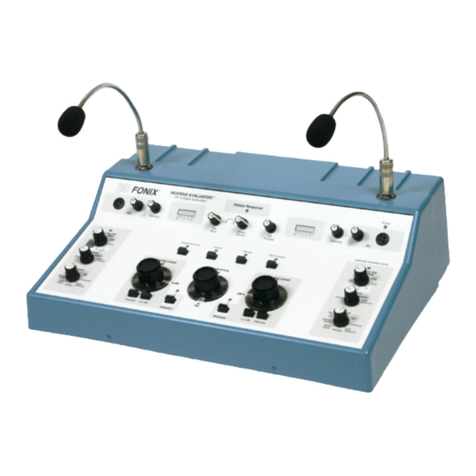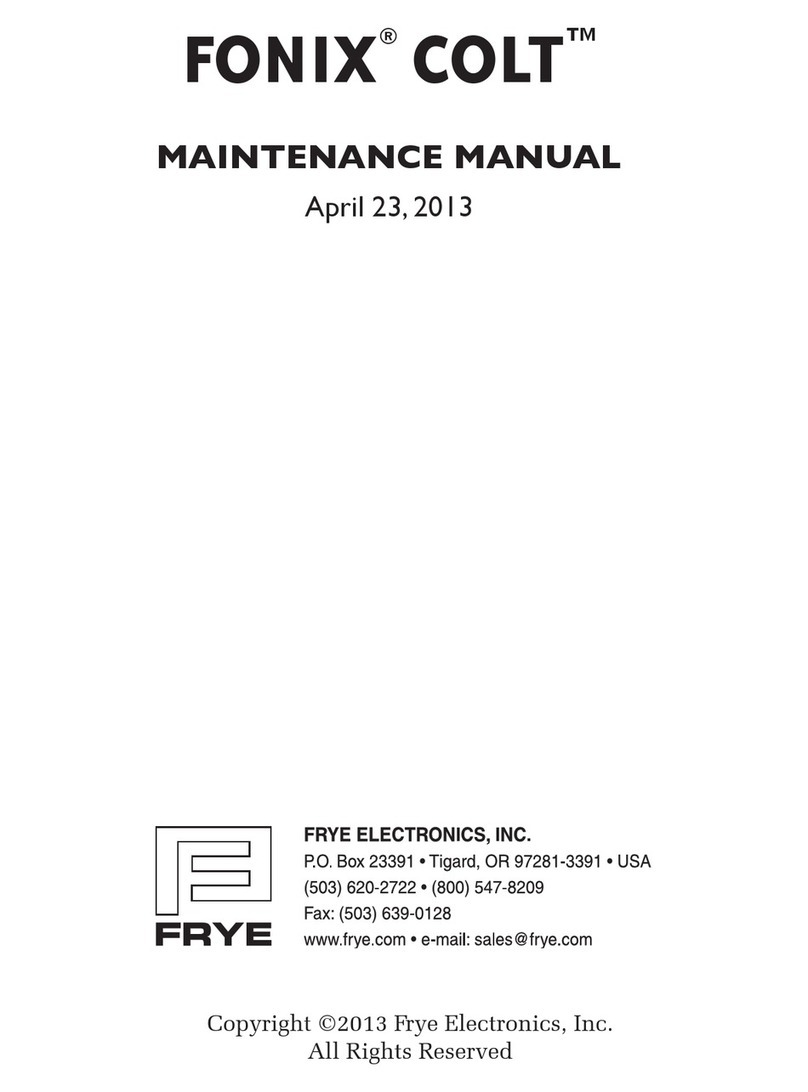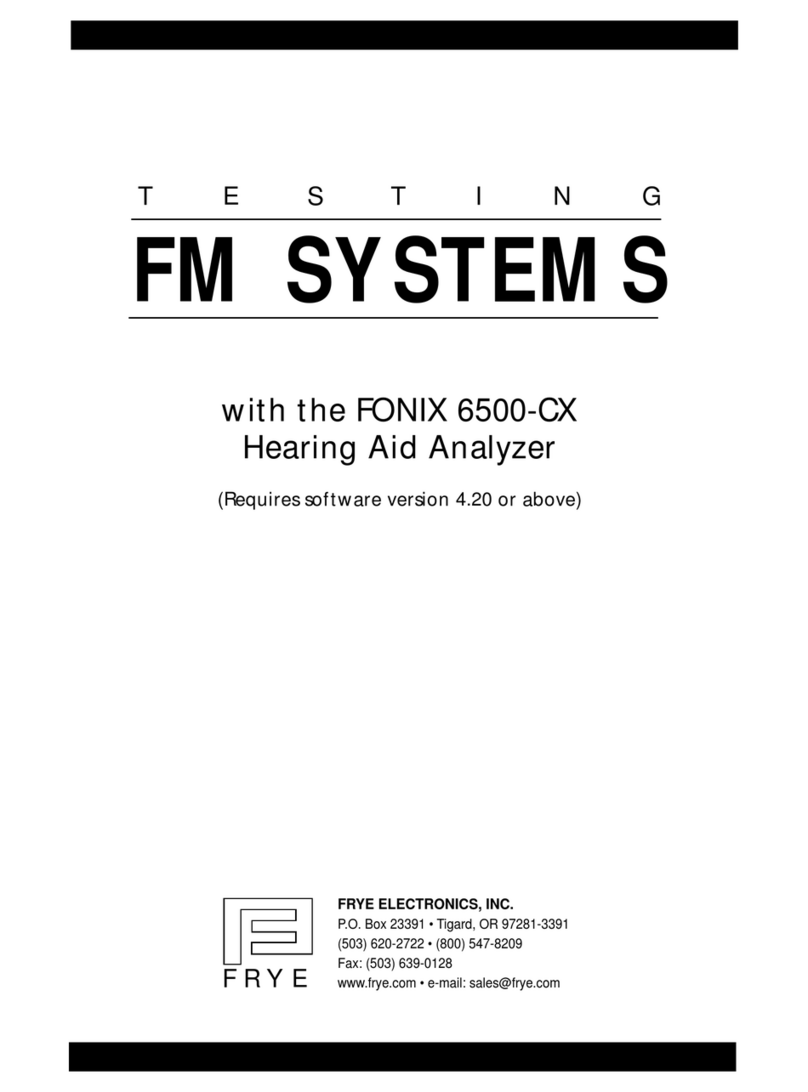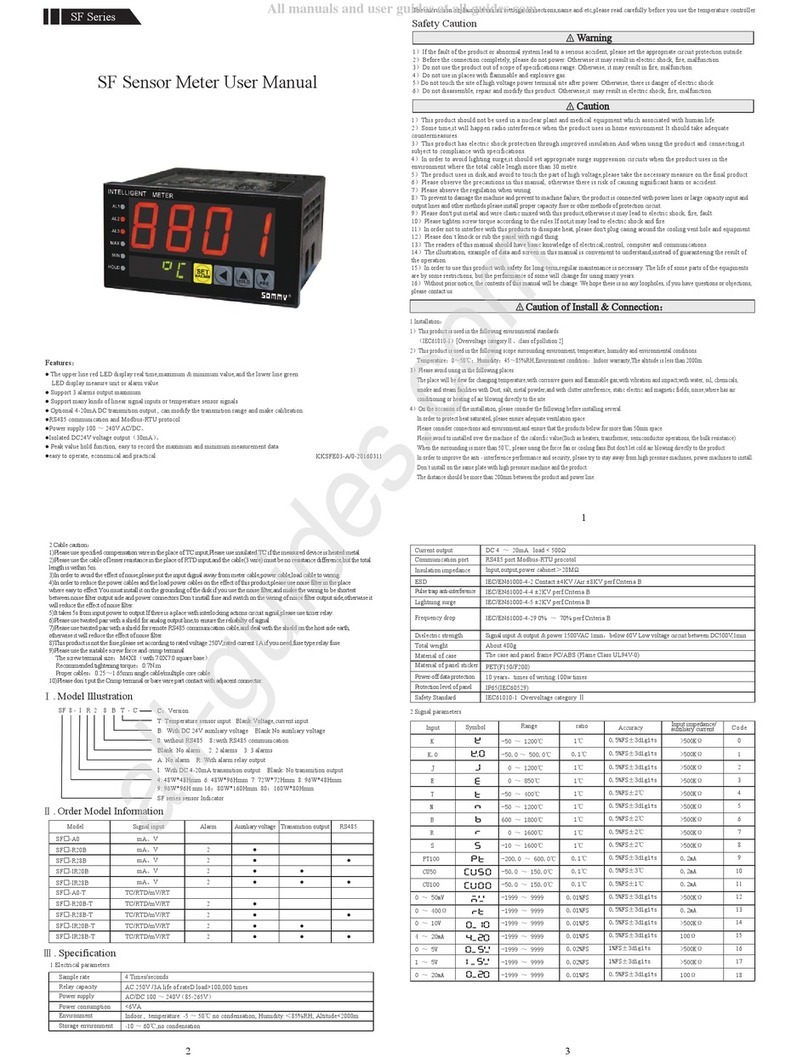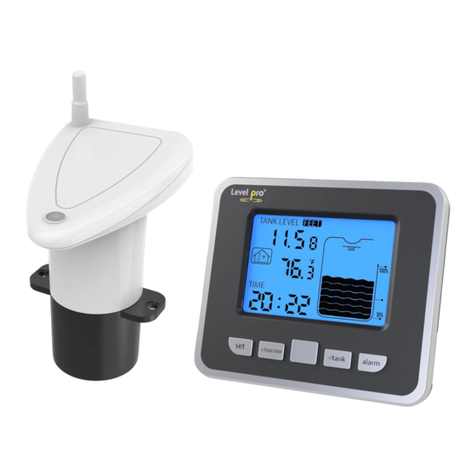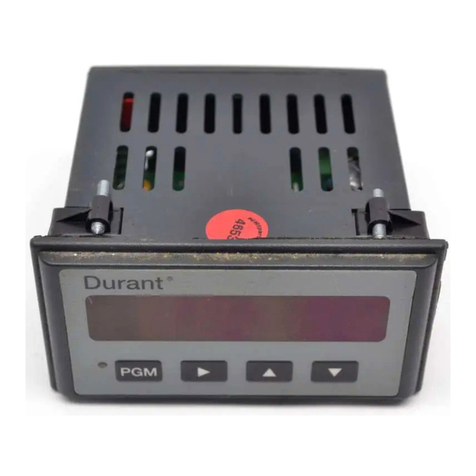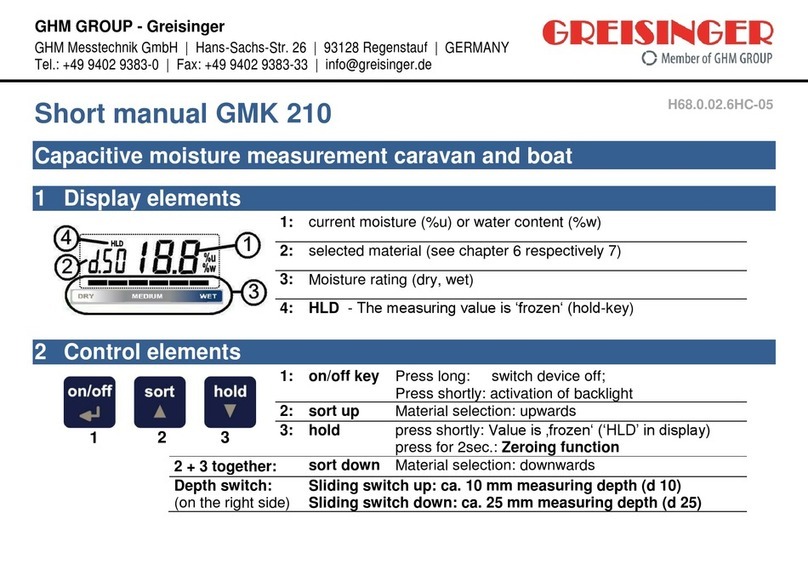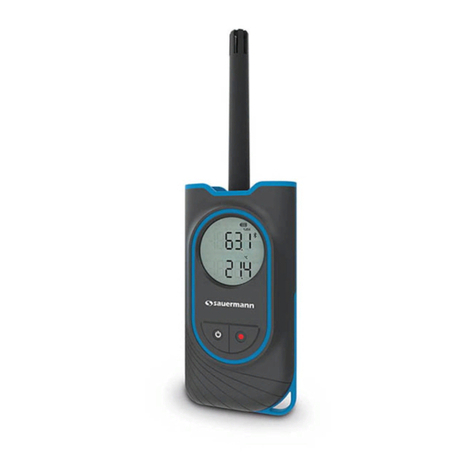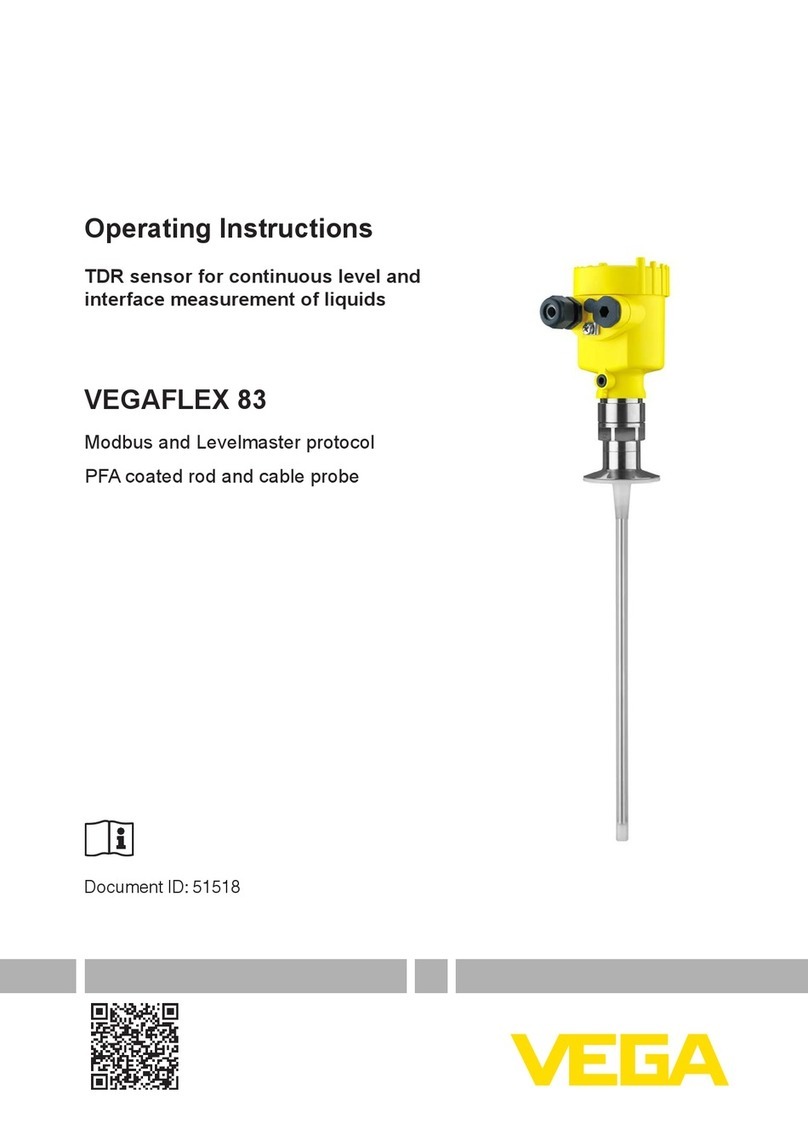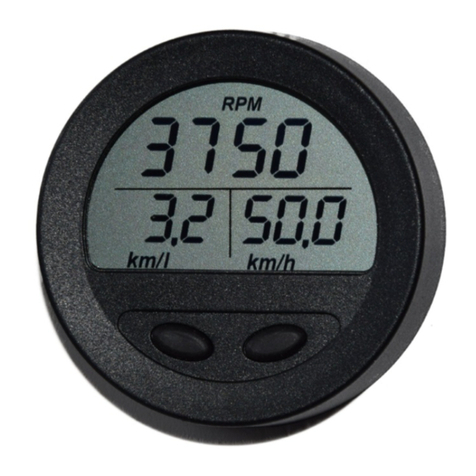Frye FONIX FP35 User manual

MAINTENANCE MANUAL
Rev. 23
Copyright © 2012 Frye Electronics, Inc.
All Rights Reserved. Rev. December 21, 2012
FONIX®
FP35


Table of Contentss
Chapter 1: Intro & Specifications ...........................................1
Introduction ........................................................1
1.1 Acoustical Outputs ...............................................1
1.2 Telecoil Outputs .................................................2
1.3 Battery Current ..................................................2
1.4 Digital Readout of Sound Pressure Level ..............................2
1.5 Measurement Inputs ..............................................2
1.6 Harmonic Distortion Analyzer ......................................3
1.7 Available Tests...................................................3
1.8 Input Power .....................................................3
1.9 Physical Dimensions..............................................3
1.10 Printer, Internal ..................................................3
1.11 Printer, External .................................................4
1.12 Internal Sound Chamber Dimensions ................................4
1.13 Operating Temperature ............................................4
1.14 Guarantee ......................................................4
Chapter 2: Specification Test Procedure .....................................5
2.1 Source Frequency Accuracy ........................................5
2.2 Source Harmonic Distortion........................................5
2.3 Source Amplitude Accuracy after Leveling ............................5
2.4 Attenuator Accuracy ..............................................6
2.5 Accuracy of Coupler Measurement ..................................6
2.6 System Equivalent Input Noise .....................................7
2.7 Crosstalk .......................................................7
Chapter 3: Calibration...................................................11
3.1 Introduction ...................................................11
3.2 Hardware Calibration ............................................11
3.3 System Calibration ..............................................12
3.4 Microphone Check ..............................................12
3.5 Microphone Calibration ..........................................16
3.6 Insert Earphone Calibration .......................................20
Chapter 4: Circuit Description ............................................25
4.1 System Overview ...............................................25
4.2 CPU ..........................................................26
4.3 CPLD .........................................................28
4.4 Signal Source ..................................................32
4.5 External Microphone Adapter Board ............................35
4.6 Microphone Prescaler ............................................35
4.7 Power Supply ..................................................39

4.8 Standard Daughter Board .........................................41
4.9 VGA Daughter Board.............................................41
Chapter 5: Service and Repair Guide .......................................51
Chapter 6: Cleaning .....................................................53
Chapter 7: Safety .......................................................55
7.1 Safety Markings.................................................55
7.2 Safety Classification for IEC 60601-1 ................................55
7.3 Connection of peripheral equipment to the FP35 ......................56
7.4 Electromagnetic compatibility .....................................57
7.5 Disposal of the FP35 and accessories................................57
7.6 Disconnection of the FP35 Analyzer ................................58
Chapter 8: Electromagnetic Compatibility...................................59

Chapter 1: Specications 1
Chapter 1: Intro & Specications
Introduction
Welcome to the FONIX FP35 Analyzer! The FONIX FP35 provides quick, accu-
rate information about how well a hearing aid works. It uses a graphical display
or numerical table to show how much amplification the aid provides, which
frequencies it amplifies, and how much distortion is creates.
The FP35 uses a backlit LCD with an adjustable contrast for its main display,
and it has a thermal printer built in so that you can print hard copies of gathered
data no matter where you are. The FP35 also has an external monitor option that
allows the simultaneous display of the built-in LCD and an external monitor.
Most computer monitors will work with this feature, although the FP35 display
is only in two colors. There is also a parallel port on the back of all FP35 analyz-
ers, allowing the use of an external printer.
Indications for use
The FONIX FP35 Hearing Aid Analyzer allows the user to test the characteristics
of a hearing aid using coupler and optional real-ear measurements. These char-
acteristics include: Frequency response, harmonic distortion, equivalent input
noise, and compression. Coupler measurements are performed inside a sound
chamber. Real-ear measurements are performed with a small probe microphone
inside the patient’s ear. This manual provides detailed instructions on the mea-
surement capabilities and user interface of the FONIX FP35.
1.1 Acoustical Outputs
Frequencies: 200-8000 Hz in 100 Hz intervals (user interface)
200-8000 Hz in 1 Hz intervals (RS232)
Frequency Accuracy 1%.
Amplitudes: 40-100 dB in 5 dB intervals coupler, 40-90 dB in 5
dB intervals real-ear (user interface)
40-100 dB in 0.01 dB intervals coupler, 40-90 dB
in 0.01 dB real-ear (RS232)
Accuracy: Coupler: ±2.5 dB from 300 to 5000 Hz, all others
±3.5 dB (after leveling)
Real-ear: ±3 dB, 200-8000 Hz (after leveling)

2 FONIX FP35 Maintenance Manual
Distortion (at 70 dB SPL): Puretone: < 0.5%, 400-2500 Hz
1.2 Telecoil Outputs
Field Strength: TMFS, 1, 1.78, 3.16, 5.62, 10, 17.8, 31.6, 56.2,
100 mA/m (user interface)
0-180 mA/m in 0.01 mA/m specified intervals
(RS232)
Accuracy: ± 2 dB
1.3 Battery Current
Readout Range: 0.00-25.00 mA
Accuracy: ± 5%
Resolution: 0.01 mA
Resistance Tolerance: ± 5% ± 0.5 ohm
1.4 Digital Readout of Sound Pressure Level
Frequency Range: 200-8000 Hz
Amplitude Range: 0-150 dB SPL
Resolution 0.1 dB
Accuracy: Coupler measurements: ±2.0 dB
Probe measurements: ±2.0 dB
Reference measurements: ±2.0 dB
Equivalent Input Noise: < 50 dB RMS
1.5 Measurement Inputs
Probe Microphone: Crosstalk from reference microphone: < -80 dB
Crosstalk from coupler microphone: < -80 dB
Reference Microphone: Crosstalk from probe microphone: < -80 dB
Crosstalk from coupler microphone: < -80 dB

Chapter 1: Specications 3
1.6 Harmonic Distortion Analyzer
Type 2nd, 3rd, and 2nd + 3rd = Total
Resolution 0.1 percent
1.7 Available Tests
Automated test sequences: ANSI S3.22-1996, ANSI S3.22-2003,
IEC 60118-7:1994, JIS:2000, ISI
Additional Coupler Tests: Coupler Multicurve, Coupler Target, Coupler Ear
Sim
Real-ear Test Screens: Audiogram Entry, Insertion Gain, Real-ear Unaid-
ed & Aided, Real-ear SPL
1.8 Input Power
Voltage 100 – 240 VAC
Frequency 47 – 63 Hz
Current 1.35A
Power dissipation 27 watts typical with full operation.
23 watts when unit is in Standby.
Earth Leakage current < 500 uA
Patient Leakage current < 100 uA
1.9 Physical Dimensions
Size: 16 x 11 x 4.9 inches
Weight: 12 lbs (5.45 Kg) with softcase and all accessories
except manual
Touch Screen: Resistive
1.10 Printer, Internal
Type: Thermal
Paper width: 80 mm (+0, –1 mm)

4 FONIX FP35 Maintenance Manual
1.11 Printer, External
Interface: Parallel
Language: HP PCL3
1.12 Internal Sound Chamber Dimensions
Test area: 2.65” W x 5.25”L x 1.1” H
Speaker: 2.5" cone
1.13 Environmental Conditions
Operating Conditions: 15 – 35° C (59 – 95° F),
5-85% humidity (non-condensing)
Shipping Conditions: -20 – 60° C (-4 – 140° F),
5-85% humidity (non-condensing)
1.14 Guarantee
The FONIX FP35 Portable Hearing Aid Analyzer and its accessories are
guaraanteed to be free from manufacturing defects which would prevent the
products from meeting these specifications for a period of one year from date of
purchase.

Chapter 2: Specication Test Procedure 5
Chapter 2: Specication Test Procedure
2.1 Source Frequency Accuracy
Instrument Required: Frequency counter accurate to 0.1 percent and capable of mea-
suring 1000Hz.
Setup: Enter the Coupler Multicurve screen of the FP35 analyzer and present a static
pure-tone signal with a 100 dB SPL input level at 1000 Hz. Connect the frequency
counter to the internal speaker jack.
Measurement: The frequency counter should read 1000 Hz within the tolerance of the
counter plus the specified tolerance of the FP35. See Section 1.1.
2.2 Source Harmonic Distortion
Instrument required: Audio Spectrum Analyzer with instrumentation quality micro-
phone and preamplifier.
Setup: Enter the Coupler Multicurve screen of the FP35 analyzer and present a static
pure-tone signal with a 70 dB input level. Put the spectrum analyzer microphone in
the sound chamber and close the lid. Make sure the room is quiet.
Measurements: At 400, 1000, and 2500 Hz, measure the amplitude of the fundamen-
tal, second, and third harmonics. Make sure that the second and third harmonics
combined are at least 46 dB (0.5%) below the fundamental. See Section 1.1.
2.3 Source Amplitude Accuracy after Leveling
Instrument Required: Precision sound level meter with 1/2" condenser microphone,
response set to flat frequency response (C weighted).
Setup: Enter the Coupler Multicurve screen on the FP35 analyzer and present a static
pure-tone signal with a 90 dB SPL input level. Turn off pure-tone noise reduction.
Place the coupler microphone at the reference point in the sound chamber. Close the
chamber lid. Level the analyzer. Replace the coupler microphone with sound level
meter microphone at the reference point in the sound chamber. Close the chamber lid.

6 FONIX FP35 Maintenance Manual
Measurements: Starting at 200 Hz, measure the RMS levels at the reference point
with the sound level meter for each puretone frequency. It should read 90 dB SPL
within the tolerance of the sound level meter plus the tolerance of the FP35 analyzer
at each frequency. See Section 1.1.
2.4 Attenuator Accuracy
Instrument required: Precision AC voltmeter that is accurate at 1KHz.
Setup: Enter the Coupler Multicurve screen and present a static pure-tone signal at
1000 Hz. Turn off pure-tone noise reduction. Patch the electrical drive signal from
the internal speaker output jack back into the microphone input jack and also into
the input of the precision AC voltmeter. The hardware calibration fixture can be
used for this test.
Measurements: Set the amplitude of the pure-tone source so that approximately
140 dB SPL is measured by the FP35. Measure the voltage on the voltmeter and note
the input amplitude used by the FP35. Reduce the output level in 10 dB increments
and note that the voltage changes by 10 dB within the tolerance of the voltmeter
plus the tolerance of the FP35 source attenuator. Also note that the input level on
the FP35 changes by about the same amount as the voltmeter. See Section 1.1.
Caution: Make sure that an adaquate signal to noise ratio is maintained. This can be
important in making good measurements, especially at low signal levels.
An attenuator in the DIN connector of the patch cord may be needed to reach the
lower levels on the digitizer. This can be made by using a series resistor and 1000
ohm shunt resistor from the signal lead to ground.
2.5 Accuracy of Coupler Measurement
Instrument Required: Precision sound level meter with 1/2" condenser microphone,
response set to flat frequency response (C weighted).
Setup: Enter the Coupler Multicurve screen on the FP35 and present a static pure-
tone signal at 90 dB SPL. Turn off pure-tone noise reduction. Place the sound level
meter’s microphone at the reference point in the FP35 sound chamber. Place the
FP35 coupler microphone so that its grill is facing the sound level meter micro-
phone’s grill and is 1/8" away from it. Leave the chamber lid open and make sure the
room is very quiet.

Chapter 2: Specication Test Procedure 7
Measurements: Starting at 200 Hz, measure the RMS levels at the reference point with
both systems for each puretone frequency. They should agree within the tolerance of
the sound level meter plus the tolerance of the FP35 analyzer. See Section 2.3.
2.6 System Equivalent Input Noise
Coupler Channel
Setup: Insert the coupler microphone into an HA-1 coupler. Plug the access hole in
the coupler with Fun-Tak. Put this assembly into the sound chamber and close the
lid. Make sure the room is very quiet during the measurements. Enter the Coupler
Multicurve screen on the FP35 analyzer. Pure-tone noise reduction and the refer-
ence microphone should be off. Put the analyzer in pure-tone static mode and set
the source to OFF.
Measurements: Make sure the MIC SPL readout almost always shows less than the
equivalent input specification from Section 1.2.
Probe Channel (Composite and Real-ear Options required)
Setup: Plug the end of a probe tube connected to the probe microphone with Fun-
Tak. Put this assembly into the sound chamber and close the lid. Make sure the
room is very quiet during the measurements. Enter one of the real-ear measure-
ment screens. Turn off composite noise reduction and the reference microphone.
Set the source type to Composite and set the input level to OFF. Start the compos-
ite spectrum analysis measurement.
Measurements: Make sure the RMS OUT readout shows less than the equivalent
input specification from Section 1.3.
2.7 Crosstalk
Equipment Required: The Real-ear and Composite options on the FP35 analyzer. A
Horn driver speaker with the horn removed and a 1/2" coupler attached to the speaker
opening with Fun-Tak. A sinewave generator and a power amplifier to drive the speak-
er. This setup needs to be able to drive a microphone between 130 dB-140 dB SPL at
200, 1000, and 8000 Hz.
Testing the required equipment: You need to check the drive level of this setup and
the isolation between the horn driver and the sealed microphone in the FP35 sound
chamber.

8 FONIX FP35 Maintenance Manual
1. Put the coupler microphone into the horn driver. Enter the Coupler Multicurve
screen and set the source type to Composite and the source amplitude to OFF.
Turn off the composite noise reduction and the reference microphone.
2. Present a 200 Hz signal with an ampltiude between 130-140 dB SPL with the
sinewave generator. Note the volume setting used to get this level.
3. Place the coupler microphone into a plugged HA-1 coupler and the assembly
into FP35 sound chamber. Close the lid of the chamber.
4. Put a 1/2" dummy microphone in the horn driver.
5. Set composite noise reduction to 16X.
6. Start the composite spectrum analysis measurement and observe the measure-
ment at 200 Hz. This measurement should be at least 100 dB SPL less than
the SPL measured in the horn driver.
7. Repeat steps 2-6 for 1000 Hz and 8000 Hz. If necessary to achieve the isolation,
locate the horn driver further away or on a different surface than the FP35
analyzer. Alternately, set the horn driver and the FP35 analyzer on a soft foam
pad in order to achieve this isolation.
Coupler to Probe Channel:
Setup: Plug the end of the probe tube attached to the probe microphone with Fun-
Tak (Blue Stik). Put the probe microphone into the sound chamber and close the
lid. Make sure the room is very quiet during the measurements. Place the coupler
microphone into the horn driver assembly. In the Coupler Multicurve screen, set
the noise reduction to 16X and the reference microphone to ON. Set the source
type to Composite and set the amplitude of the source to OFF.
Measurements: Set the sinewave generator to produce a tone at 200 Hz with the
volume control position as noted in step 2 of the equipment test above. Start the
spectrum analysis measurement with the FP35 analyzer. The output at 200 Hz is
the crosstalk measurement. Make sure this meets the crosstalk specification given
in Section 1.4. Repeat this test for 1000 Hz and 8000 Hz.
Probe to Coupler Channel:
Setup: Insert the coupler microphone into the HA-1 coupler. Plug the access hole
in the coupler with Fun-Tak. Put this assembly into the sound chamber and close
the lid. Make sure the room is very quiet during the measurements. Place the probe
tube connected to the probe microphone into the horn driver assembly using the
probe microphone adapter. Enter the Real-ear Unaided and Aided screen on the
FP35 analyzer. Set the composite noise reduction to 16X, turn off the reference mi-
crophone, and set the output limit to 140 dB SPL. Set the source type to Composite
and set the source amplitude to OFF.

Chapter 2: Specication Test Procedure 9
Measurements: Set the sinewave generator to produce a tone at 200 Hz with the
volume control position as noted in step 2 of the equipment test above. Start the
spectrum analysis measurement with the FP35 analyzer. The output at 200 Hz
is the crosstalk measurement. Make sure this meets the crosstalk specification
given in Section 1.4. Repeat this test for 1000 Hz and 8000 Hz.


Chapter 3: Calibration 11
Chapter 3: Calibration
3.1 Introduction
There are several different calibration procedures available on the FP35: Hardware
calibration, system calibration, and microphone calibration. The hardware calibra-
tion is performed at the factory using a "hardware calibration fixture." This type of
calibration only needs to be done at the factory when the analyzer is manufactured
or after a major repair or upgrade. This type of calibration does not need to be done
in the field.
The FP35 analyzer is temperature sensitive. The system calibration helps account
for measurement variations that occur because of the measurement environment.
This calibration can be performed by a qualified technician in the field.
The microphone calibration adjusts the sensitivity of the microphones. We recom-
mend that a qualified technician perform this calibration once a year with a sound
calibrator.
3.2 Hardware Calibration
This type of calibration is generally only performed at the factory after a major
repair or upgrade. It requires a "hardware calibration fixture" that is generally not
available to customers or distributors.
Make sure the FP35 analyzer has been operating at room temperature for at least
twenty minutes. Connect the “hardware calibration fixture” from the earphone jack
to the microphone jack (the schematic for this fixture is included at the back of this
maintenance manual). Make sure to always perform a system calibration after do-
ing the hardware calibration.
From the Opening Screen, press [MENU] to open the Default Settings Menu. Then
press [F3] to enter the Calibration Screen.
Press [F2] to enter the Date/Time Screen. Make sure the date and time are set cor-
rectly. Press [EXIT] to return to the Calibration Screen.
Press [F5] and [START] to perform the calibration (the calibration function of [F5]
is only available when the hardware calibration fixture is connected). The calibra-
tion fixture can be disconnected after the FP35 analyzer indicates the calibration is
complete and successful.

12 FONIX FP35 Maintenance Manual
If any error occurs during calibration, the FP35 analyzer will return a code to indicate
what happened. Here are the error code definitions:
1—User abort
2—No calibration cable
3—Measurement error
4—Prescale error
5—Frequency response error
6—Speech filter error
7—Source attenuator error
8—Codec gain error
Contact the factory if you encounter any of these errors.
3.3 System Calibration
This type of calibration should always be performed after the hardware calibration
described in Section 3.2. It should also be performed before the microphone check de-
scribed in Section 3.4 and the microphone calibration described in Section 3.5.
Make sure the FP35 analyzer has been operating at room temperature for at least twenty
minutes. From the Opening Screen, press [MENU] and then [F3] to enter the Calibration
Screen. Select “Calibrate System” with the up/down keys. Press [START] to perform the
calibration. After the calibration is complete, select “Store calibration in EEROM” with
the down arrow key, and press [START].
3.4 Microphone Check
Do the following procedure to determine if the coupler and probe microphones are out
of calibration.
Calibration instructions are in Section 3.5.
3.4.1 Coupler Microphone
For the coupler microphone, you will need a sound level calibrator such as the Quest
QC-10.
1. Press [MENU] from the Opening Screen to enter the Default Settings Menu.
2. Press [NEXT].
3. Use the arrow keys to set the USER LEVEL to ADVANCED.
4. Press [EXIT] to return to the Opening Screen.

Chapter 3: Calibration 13
5. Press [F3] to enter the Coupler Multicurve Mode from the Opening Screen.
6. Use [F4] to choose NORM.
7. Press [MENU].
8. Set REF MIC to OFF, if necessary, using the arrow keys. (This menu item will
not appear on all analyzers.)
9. Press [NEXT] to enter the Advanced Menu. Set STATIC TONE to SINGLE.
10. Press [EXIT] to return to the Coupler Multicurve Screen.
11. Press [] repeatedly until the single tone is turned off.
12. Use the microphone adapter supplied with the FP35 to fit the coupler micro-
phone into the calibrator, and turn the calibrator on. See Figure 3.4.1.
13. Observe the output under MIC SPL. If it matches
the specified amplitude level of the calibrator
within ±1 dB, the coupler microphone is within
specifications and does not need to be calibrat-
ed. If the coupler microphone is out of calibra-
tion, follow the instructions found in Section
3.5.1.
14. Press [EXIT] and follow steps 1-4 again to set the
USER LEVEL back to EASY.
Note: if you are using a calibrator that uses a signal
with a frequency not divisible by 100 Hz, you will need
to check the calibration in the microphone calibration
screen.
3.4.2 Reference Microphone Check
These instructions only need to be followed if you
are using a new style integrated probe microphone
set. If you are using an old style (legacy) probe mi-
crophone set, skip to the probe microphone calibra-
tion check instructions found in Section 3.4.3.
1. Follow Steps 1-4 in Section 3.4.1 above to set the USER LEVEL to ADVANCED.
2. Press [F3] to enter the Coupler Multicurve Mode from the Opening screen.
3. Press [MENU].
4. Press [NEXT] to enter the Advanced Menu, and use the arrow keys to set the
STATIC TONE setting to SINGLE.
5. Press [NEXT] to enter the Custom Menu. Use the arrow keys to set the MIC
Figure 3.4.1: Coupler microphone
inserted into sound calibrator.

14 FONIX FP35 Maintenance Manual
PORT to EXTERNAL.
6. Press [EXIT] and [MENU] again to refresh the menu selections.
7. Use the arrow keys to set the REF MIC to OFF.
8. Press [EXIT] to return to the Coupler Multicurve Screen.
9. Use [F4] to set the source type to NORM.
10. Use the down arrow key repeatedly until the SOURCE is OFF.
11. Place the rectangular calibrator adapter into the calibrator as shown in Figure
3.4.2. You can either hold the reference microphone to the calibrator manually
or use a rubber band.
12. Turn on the calibrator and observe the MIC SPL. If the reading matches the
output specified on the calibrator by ± 1 dB, the reference microphone is
within specification and does not need to be calibrated. Otherwise, follow the
instructions found in Section 3.5.2 to calibrate the reference microphone.
3.4.3 Probe Microphone Check
1. Follow Steps 1-4 in Section 3.4.1 above to set the USER LEVEL to ADVANCED.
2. Press [F3] to enter the Coupler Multicurve Mode from the Opening Screen.
3. Press [MENU].
4. Press [NEXT] twice to enter the Custom Menu. Use the arrow keys to set the
MIC PORT to EXTERNAL. (This setting will not appear on all analyzers.)
5. Press [EXIT] and [MENU] again to refresh the menu selections.
6. Use the arrow keys to set DISPLAY to GAIN, NOISE RED (TONE) to 16X, and
Figure 3.4.2

Chapter 3: Calibration 15
REF MIC to ON.
7. Press [EXIT] to return to the Coupler Multicurve Screen.
8a. If you are using an old style (legacy) probe microphone set, locate the cali-
bration clip and fasten it to the edge of the reference microphone. Insert a
fresh probe tube through the tube on the clip until the tip of the probe is at
the center of the reference microphone grill as shown in Figure 3.4.3A.
8b. If you are using a new style integrated probe microphone set, fasten the tip
of a fresh probe tube to the reference microphone using a dab of putty, as
shown in Figure 3.4.3B.
9. Put both microphones in the sound chamber and close the lid.
10. Set the source level to 90 dB SPL using the up arrow key.
11. Set the source type to COMP (if available) using [F4]. Otherwise, set the
source type to NORM.
12. Press [START/STOP]. If you are using the COMP source type, press [START/
STOP] again to stop the signal.
13. Look at the response. This curve represents the difference between the
probe response and the reference response. The maximum deviation from
the zero line should be 5 dB.
14. If you are not sure if the response is ± 5 dB from the zero line, press
[MENU], use the arrow keys to set the DATA/GRAPH selection to DATA, and
press [EXIT] to return to the Coupler Multicurve screen. This will give you
Figure 3.4.3A—Attaching the probe
to the reference microphone
Figure 3.4.3B—Attaching the integrated
probe to the reference microphone

16 FONIX FP35 Maintenance Manual
the numerical data of the frequency response.
15. If the response is within 5 dB of the zero line, the probe microphone is
within specifications. Otherwise, the probe microphone needs calibration.
See Section 3.5.3.
3.5 Microphone Calibration
The FP35 microphones should be calibrated after the system calibration described
in Section 3.3, and after the microphones have been checked as described in section
3.4.
There are three possible microphones on the FP35 analyzer:
•Couplermicrophone
•Probemicrophone
•Referencemicrophone
There are several variations of these microphones that may be available, depending
upon when the analyzer was manufactured and whether or not it includes the Real-
ear Option.
FP35 analyzers that do not include the Real-ear Option will only have the coupler
microphone. This procedure for calibrating this microphone is described in Section
3.5.1.
FP35 analyzers with the Real-ear Option manufactured during or after November
2008 will have an integrated probe microphone set in addition to the coupler mi-
crophone. This consists of a probe microphone integrated into the earhook and a
rectangular reference microphone that attaches to the top of the earhook. The proce-
dure for calibrating the integrated probe microphone is described in Section 3.5.3.
The procedure for calibrating the rectangular reference microphone is described in
Section 3.5.2.
FP35 analyzers with the Real-ear Option manufactured before November 2008 will
have a two microphone set consisting of a larger 14 mm coupler microphone and a
probe microphone. (The coupler microphone is used as a reference microphone dur-
ing real-ear measurements.) The procedure for calibrating the coupler microphone
is described in Section 3.5.1. The procedure for calibrating the probe microphone is
described in Section 3.5.3.
To perform the microphone calibrations, you will need the following equipment, de-
pending on what type of microphones you are calibrating. The adapters come stan-
dard with the analyzer. You can purchase additional adapters and a sound calibrator
from the factory. (Sound calibrators are special orders and may not be immediately
Other manuals for FONIX FP35
2
Table of contents
Other Frye Measuring Instrument manuals
Popular Measuring Instrument manuals by other brands

HK Instruments
HK Instruments DPG Series installation instructions
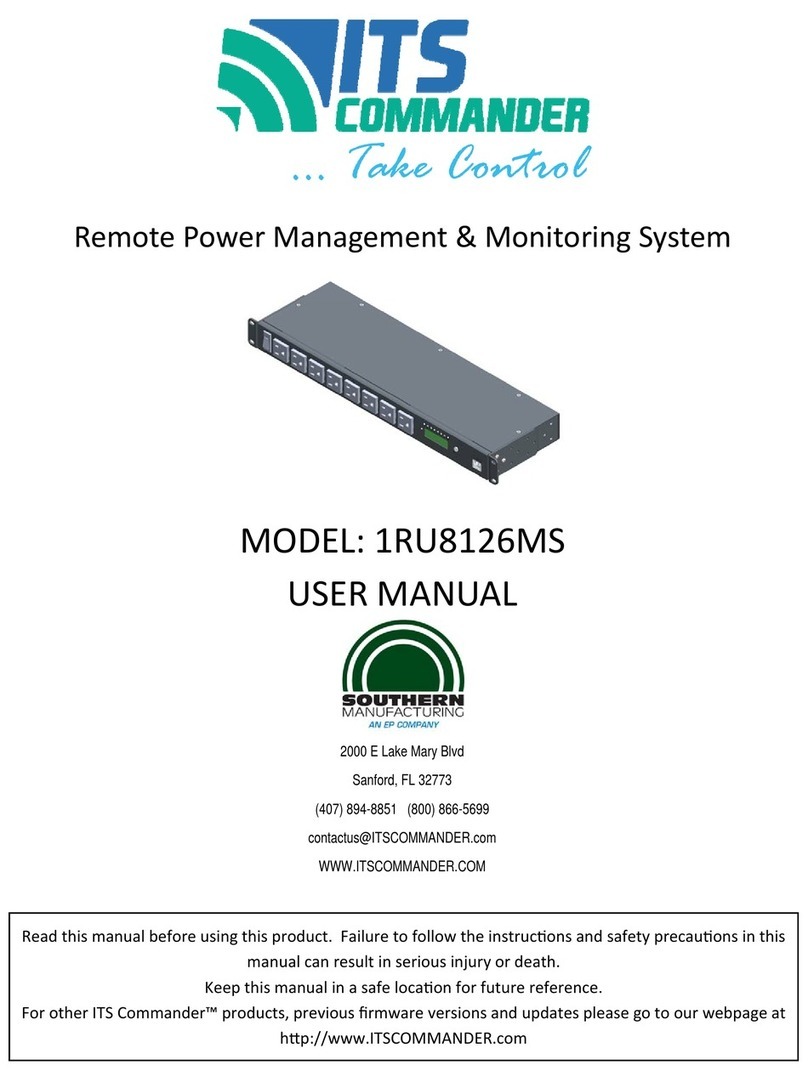
ITS Telecom
ITS Telecom 1RU8126MS user manual
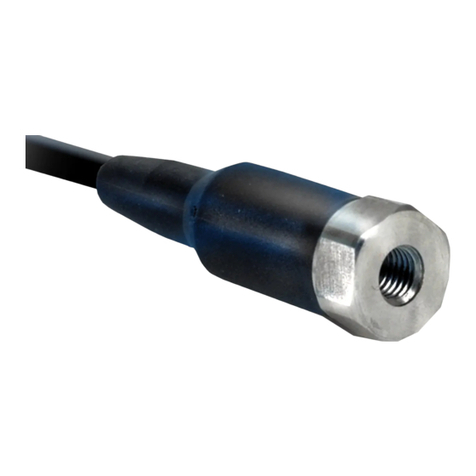
PCB Piezotronics
PCB Piezotronics IMI SENSORS 608A11/020BZ Installation and operating manual
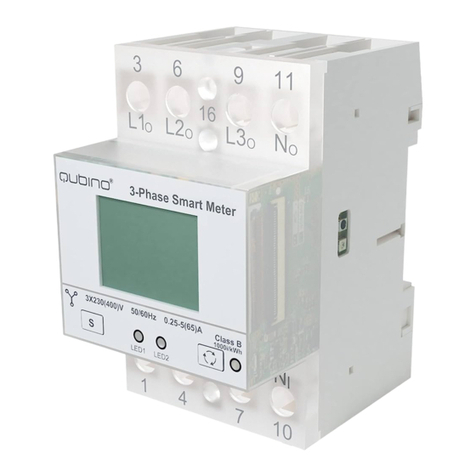
QUBINO
QUBINO ZMNHXD1 user manual
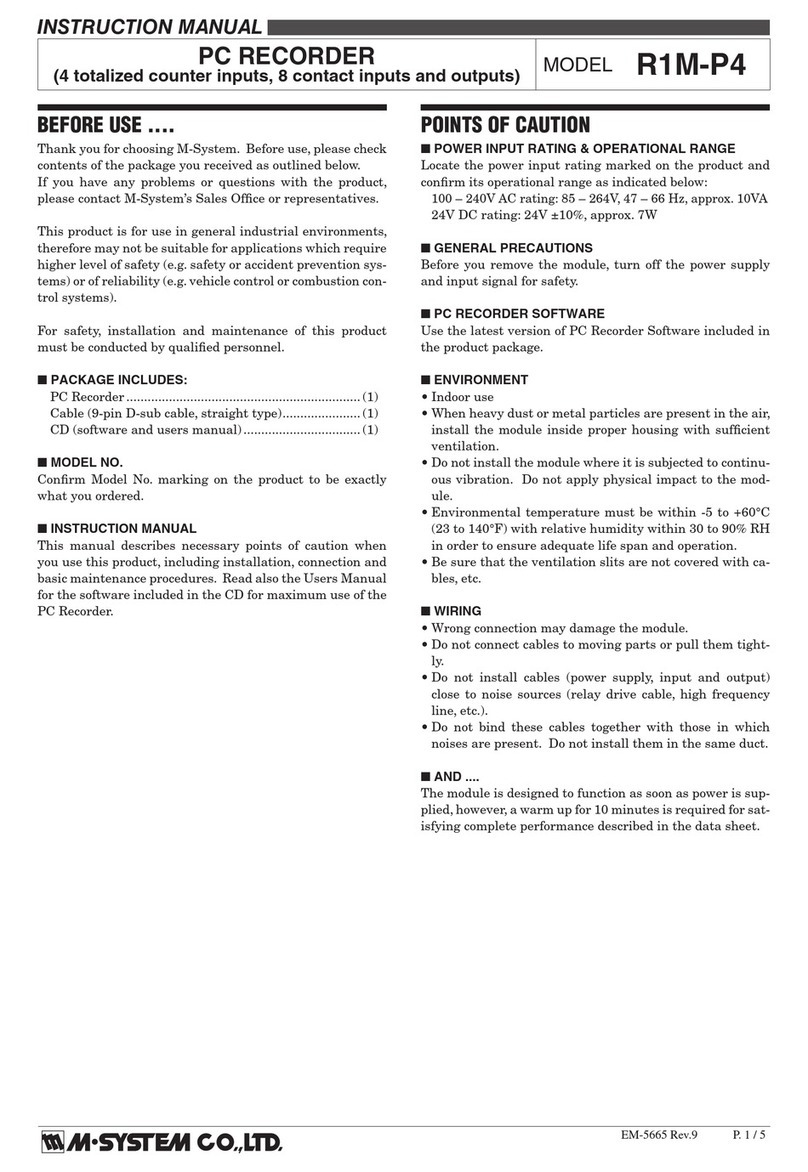
M-system
M-system R1M-P4 instruction manual
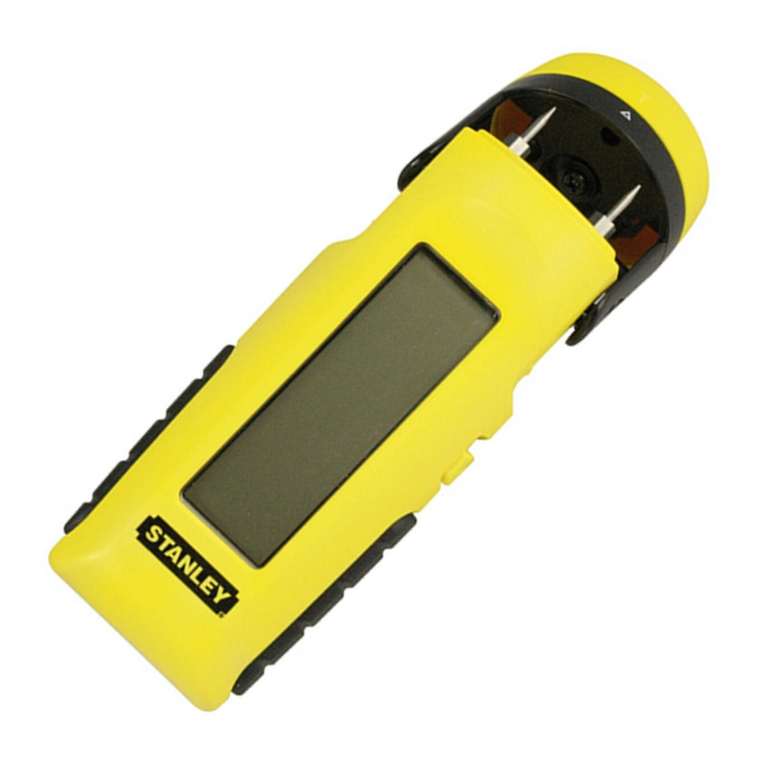
Stanley
Stanley 77-030 user manual
